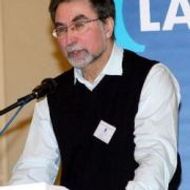- A
- A
- A
- ABC
- ABC
- ABC
- А
- А
- А
- А
- А
- HSE Campus in St. Petersburg
- School of Computer Science, Physics and Technology
- Department of Mathematics
- News
- Delhi — Capital of the Indo-Russian Conference
Tatyana A. Alexeeva, Kuznetsov N. V., Mokaev T. N. et al.
Chaos, Solitons and Fractals. 2025. Vol. 196.
Kuzyutin D., Smirnova N.
In bk.: Third International Conference, MSBC 2024, Almaty, Kazakhstan, September 18–20, 2024, Proceedings. Modeling and Simulation of Social-Behavioral Phenomena in Creative Societies. CCIS, volume 2211. Cham: Springer, 2024. Ch. 6. P. 70-84.
Korotyaev E., Леонова Е. О.
Statistical mechanics. arXie. arXive, 2022

Delhi — Capital of the Indo-Russian Conference
— Professor Nikitin, tell us about the conference.
— I spent five days in Delhi at the Indo-Russian Conference on Probability and Statistics. There were nine of us in the delegation from St Petersburg, mainly academics from SPbU and the Petersburg section of the Mathematics Institute RAS. The Indian Statistical Institute, (which was founded in 1931 by the extraordinary statistician Mahalonobis, a foreign member of RAS) organised the conference. It has campuses in Calcutta, Bangalore, Delhi and Chennai. The conference was well run and the indian participants gave high quality papers on very varied subjects. You can get an idea of it from the conference website. The weather was fine for Europeans - 12-16 degrees. The conference might become a tradition and the participants could gather again in St Petersburg in summer next year.
— What kind of research are our Indian colleagues interested in?
— Several hundred people work at the Indian Statistical Institute, carrying out research in most current areas of Probability Theory and mathematical statistics. They also work with a variety of applications of statistical methods in economics, sociology, biology, physics, linguistics and other areas.
— Professor Nikitin, what are your impressions of the country, after all, it’s another culture, vastly different from our own...
— Delhi - the capital - is a huge overcrowded city where palaces overlook slums, elephants and cows walk in the streets, monkeys and chipmunks scamper about and many many poor people try to scrape a living as street traders. Education is a high standard among young people, information technology is spreading rapidly and you can feel that they country on the rise. We were taken to see some of the sights and ancient monuments of Delhi. The highlight of the conference was the trip to Agra (200 km from Delhi) the capital of the Moghul empire where we went to see the Red Fort (a 17th century fortified palace built of red sandstone) and the famous Taj Mahal, a 75 m high white marble mausoleum build in the same period by Shah Jehan in memory of his beloved wife. It is an impressive architectural and artistic monument but I wouldn’t include it in the ‘Seven Wonders of the World’.
-
https://elearning.hse.ru/en/mooc/
Massive Open Online Courses
-
https://www.hse.ru/en/visual/
HSE Site for the Visually Impaired
-
http://5top100.com/
Russian Academic Excellence Project 5-100
- © HSE University 1993–2025 Contacts Copyright Privacy Policy Site Map
- Edit
